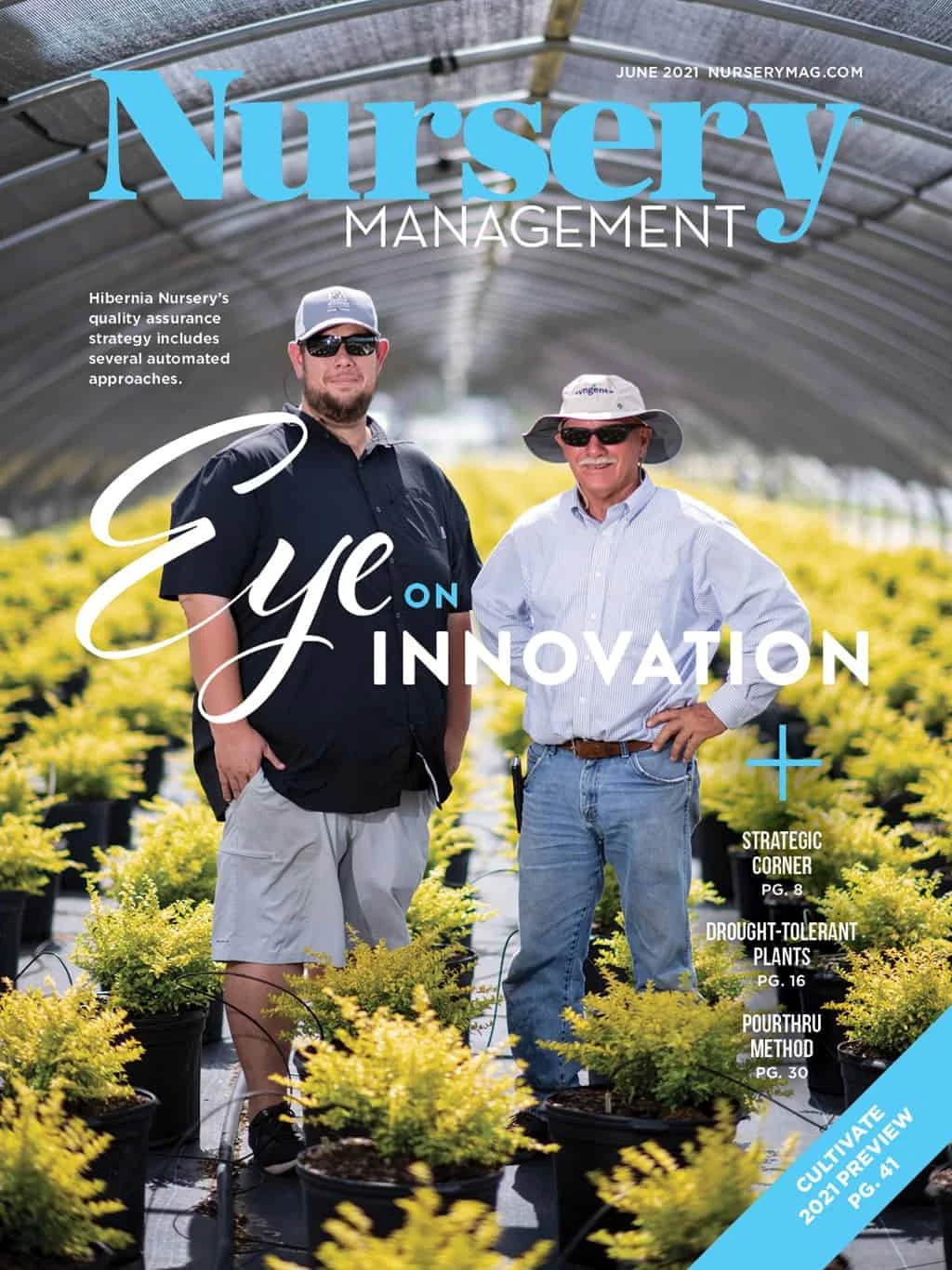
Terra Nova Nurseries

Nursery Management editor Kelli Rodda talked to Chuck Pavlich, Terra Nova’s director of new product development, about his efforts to breed drought-tolerant plants. In its last Residential Landscape Architecture Trends Survey, the American Society of Landscape Architects revealed the hottest sustainable design elements include native/adapted drought-tolerant plants (83%). That’s quite the indication this trait is important to the entire supply chain.
Nursery Management: What are some examples of drought-tolerant selections you’ve released in the market?


Chuck Pavlich: One is Agastache, more specifically the Kudos series. I was hiking in eastern Oregon and spotted a flower growing out of a rock. It was Agastache cusickii, which is native to Oregon, Idaho and Colorado. The Kudos dwarf our original Agastache, which were 3 feet tall. These are long flowering with tons of branches and have a high tolerance to downy mildew.
The Poquito series is about a half head smaller than Kudos with even more cusickii parentage. I call them a hummingbird airport.We’ve been working with Artemisia mauiensis, which is a marvelous, fluffy ball of silver in summer. It performed well at the Colorado State University trials and was named best novelty. When we launched this plant two years ago at Cultivate, people literally petted a hole in the plant. It’s easy to grow and root.
I can’t skip Echinacea, which is native only to North America. Jim Ault at Chicagoland Grows was the first to show color variation. We’ve gone through about 25 generations of work on this genus. We started with E. tennesseensis, which always had great colors, but they were one-stem wonders and suffered from crown rot. So I stopped the introduction program about nine years ago to work with new species. The Kismet series has won awards all over the U.S. and Europe.
Kniphofia are all from South Africa and are high-altitude plants from Kilimanjaro and points east. They thrive in dry soil in summer and wet soil in winter. We were able to achieve long bloom time by including about a half-dozen species in our breeding. Many generations of work went into this genus and they grow virtually everywhere.

Then there’s sedum or stonecrop, which are now Hylotelephium. We breed taller selections that have attractive seed heads, which is important since the flowers only last a couple of days, but the seed heads last a couple of months.
We have close to 30 generations in that breeding, and our clay soil conditions are bad for that genus. But they thrive in poor soil conditions. And their hardiness extends into Mongolia, Russia, and all over Asia and Eurasia.
Finally, Verbascum is a great drought-tolerant choice. We have naturally dwarf selections with grey leaves. Grey foliage typically means ‘I’m drought tolerant and I don’t want to be overwatered.’ That grey color is like sunscreen to the plant. They bloom in May and have some great flower color. However, they haven’t caught the public’s attention just yet. The same thing happened with Kniphofia, but then they really took off. I’m confident the same thing will happen with Verbascum.

NM: What’s in the pipeline that you can discuss?
CP: There are a lot of things in the pipeline. We’re working with genera from the Pyrenees and the hot side of Spain. These have incredible drought tolerance.
NM: What are the challenges in breeding drought-tolerant plants?
CP: For us, it’s our weather. We have wet winters, so we have to make them adaptable. Sometimes with drought-tolerant plants, we don’t have the heat load necessary to make them flower. But we can force them into flower in a greenhouse. For any breeder, if you’re going to produce drought-tolerant plants, they better survive hell for a couple of weeks. We’re looking for broad-spectrum survivability.
NM: Why is the drought-tolerant trait important to the market?
CP: Obviously, our weather is changing and it’s changing across the U.S.
And water is the ‘new oil’ as it becomes more expensive and scarcer. So drought tolerance is important in plants. If you can grow a plant that tolerate less care, you have a winner on your hands whether it’s the plug grower, finished grower, landscaper, or consumer — and the opinion of the consumer really trumps all.

NM: What are some misconceptions about drought-tolerant plants that consumers or people in the trade may have?
CP: Some growers may put them in same growing mix as other plants, water them the same, treat them the same and then deem them to be a ‘bad plant.’ But you can’t treat them like petunias. For consumers, if plant tag says drought tolerant, some will drop it in the ground and walk away but miss the line that says, ‘drought tolerant when established.’ We can change that with better education.
For more: Terra Nova Nurseries, www.terranovanurseries.com

Explore the June 2021 Issue
Check out more from this issue and find your next story to read.
Latest from Nursery Management
- John Ruter shares UGA's latest woody and herbaceous ornamental plant breeding projects
- Conor Foy joins EHR's national sales team
- Pantone announces its 2026 Color of the Year
- Syngenta granted federal registration for Trefinti nematicide/fungicide in ornamental market
- Get to know Kayela Aeppli
- HILA 2025 video highlights: John Gaydos of Proven Winners
- Q&A with Justin Bartlett
- Be the best choice





